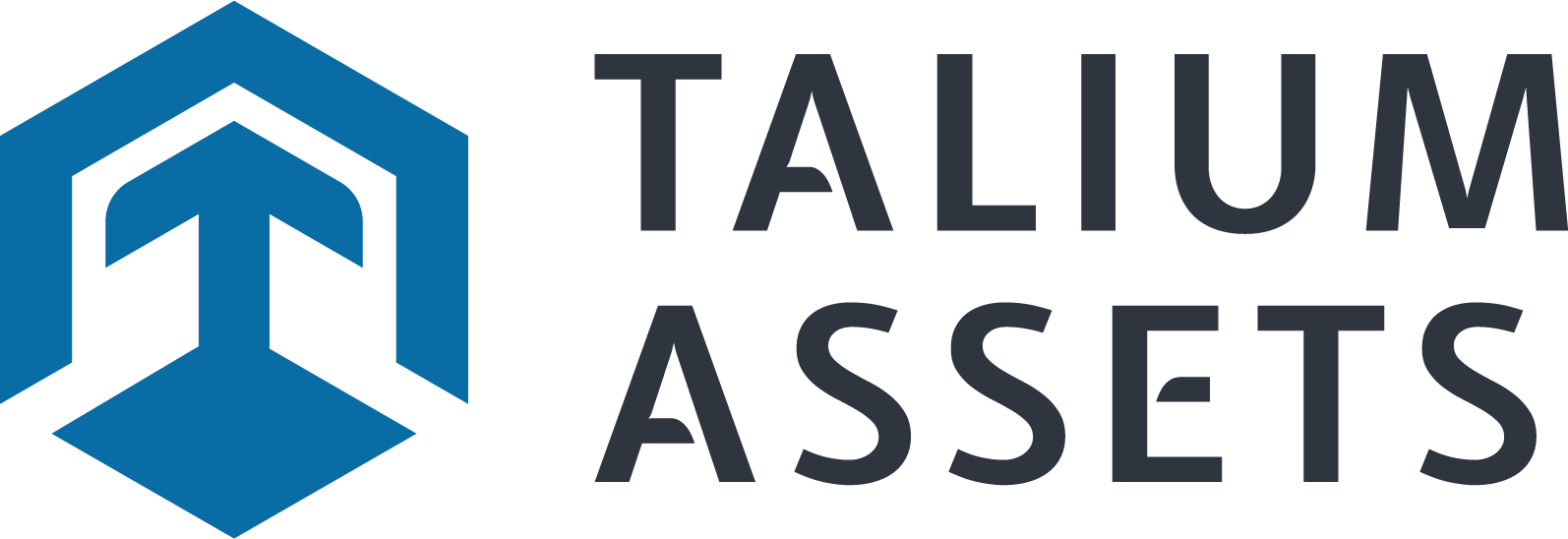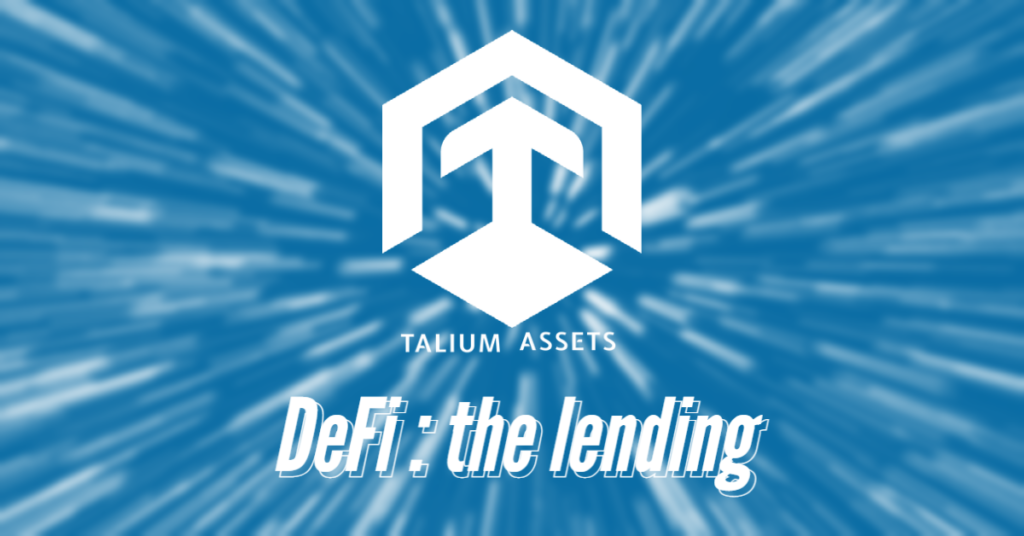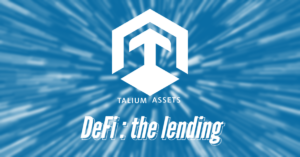On November 1, 2008, the entire cryptography world received an email from a pseudonymous user, Satoshi NAKAMOTO, who proposed to launch an open source project intended at bypassing banks with a peer-to-peer currency. The subject of the email read: “Bitcoin P2P e-cash paper”. Today, more than 13 years later, these words make so much sense.
DeFi, an acronym for “decentralized finance”, is an ecosystem of disintermediated financial applications. Its current TVL estimate (Total Value Locked) is in the US$ 200B range.
To this day mostly based on the Ethereum project, DeFi initially got enabled by the new possibilities offered by smart contracts. The race is now essentially led by DEXes (decentralized exchanges) and liquidity pools that enable one to exchange cryptocurrencies with one’s personal wallet, without need for KYCs nor for a third-party intermediary (see CEX and DEX to learn more).
Today, we can do so much more than just “exchange”. Today, we can do lending. Loans have traditionally been associated with banks; but banks are no longer in the loop with DeFi. This is a genuine revolution, and we’re going to explain how it works.
DISCLAIMER: the use of AAVE in the following explanations is merely an example and should not be seen as a recommendation. There are many other protocols.
Presentation
Maker, Aave, or Compound are lending platforms. Like DEXes, they are accessible to all, transparent and open source – because the trust is in the code. To describe their functioning in very basic terms, one could say that some users deposit cryptos on them, others borrow them, and all the rules are automatically managed by smart contracts. Let’s try to explain in further details…
Each lending platform offers its own protocol. In other words, they each offer a set of rules that allow for stable rate loans, variable rate loans, flash loans, etc.
How it works
The platform
The platform makes the liquidity pools available. For each pool, an algorithm calculates the interest paid to suppliers and the interest charged to borrowers. The calculation roughly follows the laws of supply and demand: the less liquid the pools are, the higher the interests are and vice versa (see “CEX and DEX” to understand everything about liquidity pools).
Providers
Providers participate in networks through the deposit of assets in pools. This action gives them a symbolic token with a 1-to-1 ratio (aToken in Aave, cToken in compound, …). To get back the stake and interests, one just needs to exchange the received tokens against the deposited ones.
Note: the interest received is the same as the deposit. However, many platforms offer Bonus Tokens. These are utility tokens issued by the platform that provide a discount in service fees, enable to participate in the governance of the protocol, etc. If one believes in the platform where he/she puts funds, they make sense.
Example: John deposits 1 ETH on Aave because he’s interested in the 5% APY (annual percentage yield) and the 1% Bonus Token. In reality, he exchanges 1 ETH for 1 aETH. After a while, when he wants to get his deposit and interest back (ETH and Aave Tokens as Bonus tokens), he simply logs in and exchanges his aETH for his ETH and the interest earned.
Borrowers
In a trustless environment, it is the use of a consensus that enables the execution of transfers (proof of work of bitcoin for example), while it is the use of a collateral that enables loans. The idea is always the same: the more involved you are, the more you have to lose, the less you cheat.
Borrowing cryptos is like using the liquidity pools to the extent of the funds available. It is therefore essential to ensure that the funds are returned with interest. Collateral works as a surety that you will pay back your debt and interest to get your stake back. Similar to a mortgage, we deposit a guarantee always higher than our loan, the borrowing power or Loan-to-Value is equivalent to 60-75% of the collateral depending on the platform.
Note: All borrowers are suppliers, but not all suppliers are borrowers. The collateral is added to the liquidity pools and ends up with the same bonuses as the providers (interest and Token Bonus). In addition, by borrowing, you can also be rewarded with additional bonus tokens in addition to what your deposit earns you. Some scenarios have even seen higher Token Bonus percentages than the borrowing rate… Only in crypto can you borrow profitably.
In fact, there exists yet another scenario: some loans –“flash loans”– do not require collateral. They fit into a very specific framework, as they are repaid instantly and have no counterparty risk. The borrower takes out, uses and repays in a single transaction. These are very popular with arbitrage traders and have no equivalent in traditional finance.
Main Risks
The protocol
A user that deposits funds on a platform must ensure that the protocol is trustworthy and measure the risk he/she is taking. Transparency is double-edged: the code is freely accessible. Any suspicious flaw can be revealed to prevent a scam or exploited to recover your funds. The notion of audit is extremely important but this process is long, expensive and requires high technical skills.
Example: the Aave protocol dates back to 2017 and its TVL is now estimated at $13B. One can reasonably infer that it is more reliable than a weeks-old protocol with a much lower TVL. However, Aave may appear less profitable in the short term, compared to a new protocol that could offer very attractive rates to attract cash. It is then all about choosing the right ratio for you between risk and potential gains…
Volatility
When your collateral and loan are not the same, you are exposed to the volatility of your assets and your leverage zone may be impacted. When you exceed the allowed %, you pay 5-10% liquidation penalty and your collateral gets gradually sold for safety. A mistake that can prove very costly…
Example: John deposits $10k of ETH, and can borrow up to $6k. Now let’s assume that the price of ETH drops, so the value of John’s deposit and his borrowing capacity also drop. If he did borrow $6k, he may now exceed his borrowing capacity, need to pay liquidation penalty and see his collateral sold for the safety of suppliers.
WARNING: even stable coins can experience flash crashes and are not completely shielded from volatility risks.
Setups
It is possible to create a collateralization loop. In other words, deposit a collateral, borrow a crypto, redeposit what one has borrowed as collateral to make a new loan, etc. The goal is to accumulate interest, but it also means accumulating volatility and technical risks because several platforms can be in the loop.
In 2020, the cryptos lived the DeFi Summer, the platforms of loans and borrowings becoming the new El Dorado of aspiring traders by proposing extremely profitable financial arrangements but also extremely risky ones for uninitiated newcomers… (Do not hesitate to work your Excel sheet out!)
Les sources :
- https://defipulse.com/
- https://defirate.com/derivatives/
- https://github.com/aave/aave-protocol
- https://actualiteinformatique.fr/cryptomonnaie/definition-cryptomonnaie-compoundhttps://coinacademy.fr/category/defi/
- https://cryptoast.fr/defi-finance-decentralisee/
- https://actufinance.fr/crypto-monnaie/aave/



